Eye on a cure
Five University of Dayton faculty weigh in on systemic ailments in our world and how we can repair, heal and move forward.
Kevin Hallinan
Professor, mechanical engineering
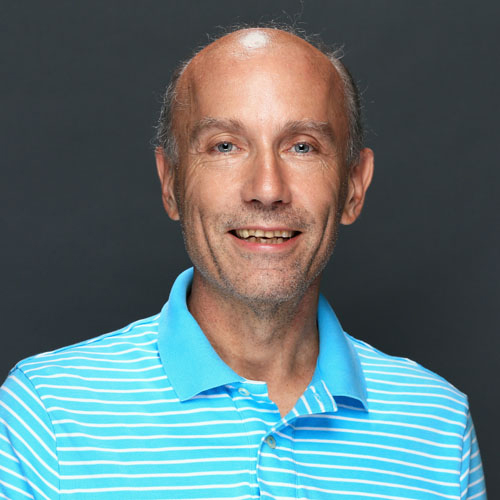
I would develop a cure for the climate crisis. Simple, right?
When I was 20, I was struggling with engineering as my major. Somehow, I heard President Jimmy Carter’s “Address to the Nation on Energy.” In it, facing what appeared to be certain energy scarcity, he laid out a plan for a sustainable energy future for our world. I was inspired, and my life’s direction as an engineer was set. What wasn’t known then was that energy scarcity wasn’t the biggest monster in the room — climate change was and is. Thus, while my “why” changed, my actions and pursuits didn’t.
Still the cure has remained elusive. I acknowledge during the past 30 years being at times hopeless about the future of our world. But, not today. I believe that we are finally on the cusp. The cure is we; not me, not governments, and especially not technological pipe dreams. Worldwide investment in already existing technologies and people is the only thing holding us back. There is, I think, an enabler to this on the horizon, coming from shockingly surprising sources: crypto-currency and blockchain, a space I am now working in. These offer a means to plan and fund any carbon reduction project anywhere in the world, in industrial, developing and underdeveloped countries, provided certain economic criteria are met. And it offers a means for a global investment in our world by any person, poor or rich, at any level in our world, with certain economic payback to all investors.
Ultimately, I have found that seeking the cure, or at least some small aspect of it, has provided me passion that has shaped everything I have done in my career. I am grateful.
Nancy Arden McHugh
Professor of philosophy and executive director, Fitz Center for Leadership in Community
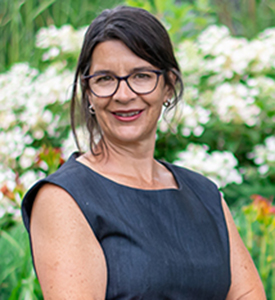
In his 1906 study The Health and the Physique of the American Negro, W.E.B. DuBois shatters the turn-of-the-last-century myth that race was the cause of the poor health conditions of Black Americans. Instead, through robust evidence, DuBois shows that it was the socially sanctioned systemic racism of the post-Reconstruction U.S. that resulted in rampant health inequities in U.S. culture.
In 2022, 116 years after DuBois framed for his reader the impact of systemic racism on the health of Black Americans, we still have rampant health inequities in the U.S. For example, Montgomery County, Ohio, has the highest maternal mortality rate in the state, with Black women dying at three times the rate of white women. One might quickly, but wrongly, assume that this could be attributed to personal habits or, like DuBois’s post-Reconstruction audience, that it has something to do with “physique.” Research shows that high rates of Black maternal mortality are instead the result of consistent and persistent systemic racism’s impact on the health of Black women. For example, in her much-cited research on “weathering,” Arline T. Geronimus
provides data that illustrates the ways in which Black women’s health is harmed (weathered) by the impact of systemic racism. This is even the case when one corrects for income. In other words, wealthy Black women are not protected from the impact of systemic racism on their bodies.
If I could create a cure for anything, what would it be? One answer is health inequity, but what I really want to end is the systemic racism that leads to these health inequities. Our challenge in 2022 is a frightening reminder of our failure to end what DuBois identified in 1906 as our greatest harm.
Leslie H. Picca
Roesch Chair in the Social Sciences
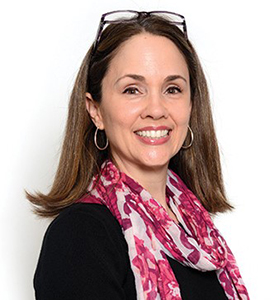
I’m a sociologist who studies how racism hides in plain sight — from how our neighborhoods were developed to the curriculum taught in our schools. Although I study social structures, I’m intrigued that some scholars suggest racism is a breakdown in empathy and the failure to see each other’s humanity, particularly the full humanity of people of color.
Early U.S. laws denied the humanity of African Americans and indigenous populations, as evident in the 1787 three-fifths clause of the U.S. Constitution. This breakdown in the failure to recognize our shared humanity is evidenced by the critical role that visual images have played in advancing racial justice. Photos and video have been instrumental in elevating dialogue to end enslavement, Jim Crow practices and police brutality. Photos such as “Whipped Peter” in 1863 of a formerly enslaved man with deep scars on his back and Emmett Till’s lynched body in 1955 were instrumental for galvanizing white support to oppose racial violence. Despite first-person narratives and scholarship depicting this violence, whites couldn’t turn away from seeing the violence with their
own eyes.
Similarly, scholars have been writing about police brutality for decades yet, in 2020, we collectively witnessed firsthand the video evidence of George Floyd gasping for breath, which made it difficult to deny police brutality, instigating international protests. In each of these instances, visual images of brutality meant we could no longer be apathetic to racial violence.
My cure is to see the humanity of all: our gifts and flaws. With greater empathy, we can better understand what other people feel and see through their points of view. We can believe racial injustice … even when the video isn’t
recording.
Dalindyebo Shabalala
Associate professor, School of Law
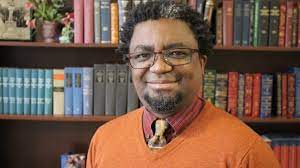
I would find a cure for climate change. It is rare for a generation to be aware beforehand of an existential threat that has high potential for disastrously limiting human flourishing. A recent report from the Intergovernmental Panel on Climate Change has made it clear that we have already locked in significant climate change to which we will have to adapt. We have made some changes that will take the Earth hundreds of years to recover from.
However, it is also rare to have the capacity, where we stand right now, to actually do something about it. Climate change is a complex problem, but the levers for change are actually simple, relative to other social problems. With some caveats, we have the technology we would need to reduce our greenhouse gas emissions and to adapt to climate change. The challenge is deploying that technology at scale and at speed, within this decade or earlier, to all industrial sectors and to all countries. That can’t be done by relying on existing market flows with high costs for accessing technology. We need electric cars everywhere. We need solar and wind energy everywhere. We need climate-adapted agriculture everywhere. This requires climate technology production everywhere without restriction of intellectual property. This requires distribution of technologies everywhere without trade barriers. We can cure climate change.
Maria Gabriela Vivero
Associate professor, economics and finance
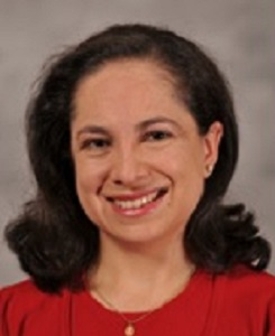
If I could cure anything, it would be our indifference toward mothers at every stage of their lives. Mothers, particularly single mothers, are the main caretakers of our children.
The 2020 U.S. Census shows that about four of every 10 children were born to unwed mothers last year, and that currently single mothers raise one in every six children. In addition, mothers are increasingly taking care of their aging parents. In a 2019 report by the Bureau of Labor Statistics, from the 40.4 million unpaid eldercare providers, 58% were women and 10% were caring for their own parents while having children living at home. This statistic is poised to rise as the population ages. Mothers are overworked, exhausted and unable to balance the demands of work and family. Many lack the education to make sound financial decisions and to have fulfilling careers outside of the home. They often lack access to formal health and financial systems and are unable to receive preventive medicine, become homeowners, save or invest.
These disadvantages have profound consequences for them and their descendants. According to a Harvard University study published in 2014, the single strongest determinant of upward mobility in the U.S. is the fraction of children living in single-parent families. Just like their children, mothers need education, guidance and support.
